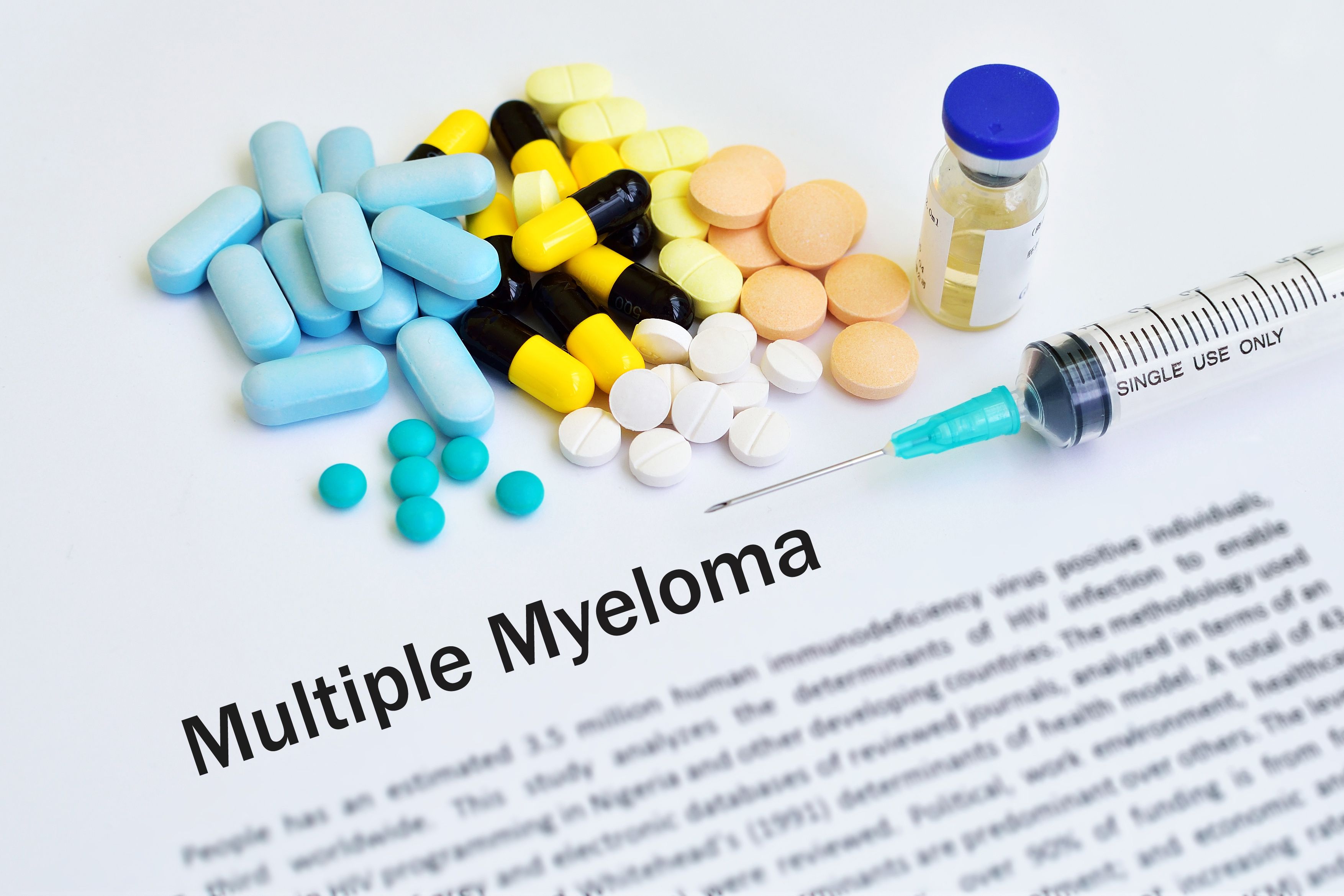For patients with relapsed multiple myeloma who have undergone hematopoietic stem cell transplantation (HSCT), consolidation therapy with Ninlaro (ixazomib), Thalomid (thalidomide) and dexamethasone, followed by maintenance therapy with single-agent Ninlaro, has been found to be beneficial compared with observation, researchers have reported.
Interim findings from the phase 3 Myeloma XII (ACCorD) trial, published in The Lancet Hematology, showed that at a median follow-up of 27 months, the median progression-free survival (PFS; the time a patient lives without their disease spreading or worsening) was 20 months among the 103 patients in the consolidation and maintenance group and 13 months among the 103 patients in the observation group.
“The ACCoRD trial demonstrates that consolidation and maintenance treatment with [Ninlaro] after salvage autologous HSCT is superior to observation in terms of progression-free survival,” researchers concluded in the study.
The trial, which occurred at 79 hospitals in the United Kingdom, enrolled patients who required treatment for first progression of disease at least 12 months following their first autologous HSCT, researchers explained.
Autologous HSCT, as defined by the National Cancer Institute, involves the collection of a patient’s healthy blood-forming stem cells and infusing them back into the patient after treatment.
Participants’ median age was 62.5 years, and their median time to disease progression from their first autologous HSCT was 32 months.
Patients were first randomized to receive either conventional autologous HSCT with melphalan or augmented autologous HSCT with melphan and Ninlaro. Then, in a second randomization, patients were assigned to consolidation and maintenance therapy or observation.
At the time of the interim analysis, researchers reported that 16, or 16%, of the 103 participants in the observation group and nine, or 9%, of the 103 participants in the consolidation and maintenance group had died. The median overall survival (OS; the time a patient lives, regardless of disease status) rate was not reached in either group, because less than half of the patients in either group had died at the time of the analysis.
Two-year OS rates were 92% in the observation group and 91.1% in the consolidation and maintenance group, with researchers noting that no significant difference was observed between the two groups regarding overall survival.
Additionally, researchers reported that 27, or 26%, of the 103 participants in the observation group and 18, or 17%, of the 103 patients in the consolidation and maintenance group experienced a second disease progression or died.
Of the 92 patients in the consolidation and maintenance arm who commenced with consolidation therapy, serious side effects were reported among 29, or 32%, of patients, compared with seven, or 7%, of the 103 patients in the observation group. The most common side effects in both groups were described by researchers as “infections and infestations.”
Reference
“Ixazomib as consolidation and maintenance versus observation in patients with relapsed multiple myeloma eligible for salvage autologous stem-cell transplantation (Myeloma XII [ACCoRD]): interim analysis of a multicentre, open-label, randomised, phase 3 trial” by Gordon Cook, et al., The Lancet Hematology.
The most common grade 3 (severe) or higher side effects among patients in the consolidation and maintenance group were upper respiratory infections, experienced by seven of 92, or 8%, of patients. Researchers reported that no deaths in the consolidation and maintenance group were deemed to be related to treatment.
Among 25 patients in the study who died, 10 of 16 patients in the observation group died of myeloma, compared with five of nine participants in the
consolidation and maintenance group. Nine patients — four in the observation group and five in the consolidation and maintenance group, including one case of COVID-19 — died of infection.
For more news on cancer updates, research and education, don’t forget to subscribe to CURE®’s newsletters here.




